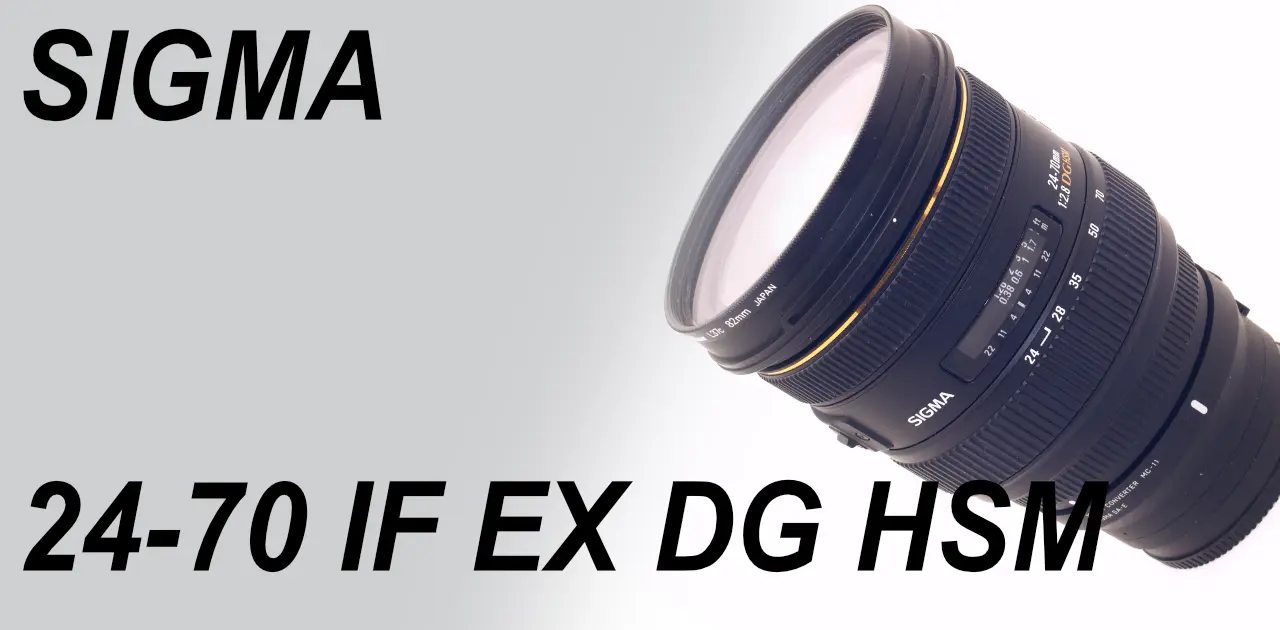SIGMA 24-70mm with α7Sii

Standard zoom for digital single-lens cameras
A review and photo examples of the SIGMA 24-70mm F2.8 EX DG HSM with SONY α7Sii.
- Please see the disclaimer regarding advertising here.
- Italicized links in the text are advertisement links that take you to other sites.
Table of contents
Gallery
- The sample photos were taken with a SONY α7Sii.
Review


1.Overview
The SIGMA 24-70mm F2.8 EX DG HSM is a standard zoom lens manufactured by Sigma and released in 2009.
With a constant maximum aperture of F2.8, it falls into the category of large-aperture standard lenses.
The lens is made up of 14 elements in 12 groups, with one ELD (Extraordinary Low Dispersion) glass element, two SLD (Special Low Dispersion) glass elements, and three aspherical lenses.
The lens barrel extends when zooming, but since it uses internal focus (IF), the lens length does not change when focusing.
The list price is 129,900 yen (excluding tax).
2.Usability
I got this lens in 2021, so it’s been a full zodiac cycle since its release. Since it’s a 12-year-old lens, the price is about 1/3, so I bought it because I wanted to see what a zoom lens at that time could do. I bought the Sigma SA mount version.
For a standard zoom lens compatible with 35mm format, the wide-angle end starts at 24mm, which was standard even in 2009, and the telephoto end is a little disappointing at 70mm, but it is thought to be a measure to make the lens barrel more compact.
The focus speed does not feel slow as long as you use it with the SD14. Since the SD14 has a small sensor, it is a zoom lens with a focal length of 40mm to 110mm, which is closer to telephoto.
When I attached it to the SONY α7Sii via MC-11, the AF did not focus properly at all. It was slow and the AF just moved. Therefore, all the samples were shot with manual focus. It was shot with a 12-megapixel 35mm full-frame sensor, but there was some light reduction in the four corners of the screen at the widest aperture of the focal length of 24mm. This becomes almost unnoticeable if you stop down the aperture a little.
The minimum shooting distance is 38cm, so unless you have an extremely high-resolution sensor, this lens is still perfectly usable today.
3.Add info.
For a standard zoom lens compatible with 35mm, the wide-angle end starts at 24mm, which was standard even in 2009, and the telephoto end at 70mm is a little disappointing, but this is thought to be a restriction to make the lens barrel compact.
Personally, I think it would be convenient to have a telephoto end of about 90mm.
Since the lens was released in 2009, a major digital camera equipped with a 35mm full-frame sensor is the CANON EOS 5D Mark II. The sensor pixel count reaches 20 million pixels. Judging from the shooting results of the a7Sii, I think that 20 million pixels is not a problem in practical use.
At the time of release, the popular digital cameras that this lens targets had APS-C size sensors in the 12 million pixel class, and with APS-C size sensors, the peripheral areas are cut off, so the center, which has better image quality, is used, which satisfies most photographers.
Sigma digital cameras of the same era were the SD14 and SD15, which had a small sensor size of 4.5MP x 3 = 13.5MP, so this lens was sufficient.
After the release of the SD1 in 2011, Sigma updated their lens line and released a high-end line of lenses called Art.
In 2017, the successor to this lens, the 24-70mm F2.8 DG OS HSM ART, was released. This new 24-70mm F2.8 DG OS HSM ART has more lens elements, a larger lens barrel, and is a heavy lens weighing over 1kg. Although it is to improve lens performance, it feels a bit over-built.
Perhaps Sigma felt that this was too much, as the weight of the 24-70mm F2.8 DG DN | Art for mirrorless cameras released in 2019 has been kept to the 800g range. This lens has a total length of 123mm, but this is because the lens barrel has been redesigned for mirrorless cameras with a short flange back.
The flange back of the SA mount is 44mm, while that of the L mount is 20mm, so if a lens with the same focal length is used in the design of an SLR lens, the lens length will be 24mm longer. It will probably be a while before a compact lens that is truly optimized for mirrorless cameras is released.
Specification
| Items | 24-70 IF EX DG HSM | 24-70mm F2.8 DG OS HSM | ART |
| Focal length(mm) | 24-70 | 24-70 |
| Max aperture | 2.8 | 2.8 |
| Min aperture | 22 | 22 |
| Aperture blade | 9 | 9 |
| Lens Construction | 14 elements in 12 groups | 19 elements in 14 groups |
| Min distance(m) | 0.38 | 0.37 |
| Lens length(mm) | 97.4 | 107.6 |
| Lens Max diameter(mm) | 88.6 | 88 |
| Filter Size | 82 | 82 |
| Lens hood | LH876-01 | LH876-04 |
| Mount | SA | SA |
| Weight(g) | 790 | 1,020 |
| Release date | 2009 | 2017 |
| Production numbers | – | – |
Reference links
- 24-70mm F2.8 IF EX DG HSM Official Page
- Digital Camera Watch Articles
- SONY α7Sii・Shige’s hobby article
Update history
- 2024.12.17
Afiliate link
- Please see the disclaimer regarding advertising here.
- Italicized links in the text are advertisement links that take you to other sites.
- Amazon Affiliate Link/Keyword=Sigma
- Amazon Affiliate Link/Keyword=Sigma lens
- Amazon Affiliate Link/Keyword=Sigma books

